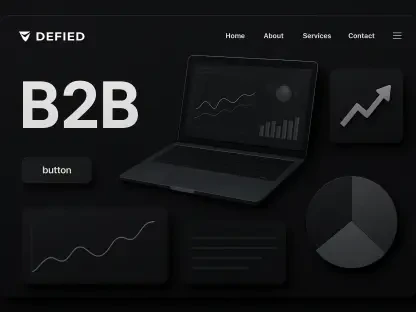Google’s search results have evolved dramatically, with AI Overviews now playing a pivotal role in how information is presented to users, capturing attention at the very top of the page. These AI-generated summaries, appearing for a significant portion of searches, have redefined visibility for content creators and marketers. Recent studies indicate that AI Overviews surface in 12.8% to 16.1% of all queries, a number that continues to grow as Google refines its algorithms. This shift presents a unique challenge: how can brands and websites secure a spot in these highly coveted positions? This guide offers a clear path to achieving that goal by providing actionable strategies tailored to the nuances of AI-driven search results.
The purpose of this comprehensive resource is to equip content creators, marketers, and SEO professionals with the tools needed to enhance their presence in AI Overviews. By focusing on practical, proven techniques, this guide aims to bridge the gap between traditional SEO practices and the emerging demands of AI optimization. The importance of this cannot be overstated—securing a citation in these summaries not only boosts visibility but also establishes authority in an increasingly competitive digital landscape. Readers will find a detailed roadmap to navigate this new terrain with confidence.
This guide unfolds through eight meticulously crafted tips, each designed to address specific aspects of optimization for AI Overviews. From restructuring content for better digestibility to leveraging multimedia platforms, these strategies build on fundamental SEO principles while introducing quick wins for AI-specific success. By following these steps, the goal of breaking into top search positions becomes not just attainable but a tangible reality for those willing to adapt and innovate.
Capturing the AI Spotlight: Why AI Overviews Matter
AI Overviews have become an undeniable force in Google Search results, transforming how users access information by delivering concise summaries directly at the top of the page. Their growing presence means that a significant number of searchers now interact with content through these AI-generated snippets before even scrolling to traditional organic listings. This shift has created a new frontier for visibility, where being featured in such a summary can drastically increase traffic and brand recognition.
For marketers and content creators, this represents an unparalleled opportunity to stand out in a crowded digital space. Securing a spot in AI Overviews is akin to earning a prime billboard on a busy highway—it positions a brand or website as a go-to resource for instant answers. The potential to influence user perception and drive clicks makes optimization for these features a critical component of modern search strategies.
To help navigate this landscape, eight actionable tips will be explored in detail, each offering a practical approach to enhancing the likelihood of being cited in AI Overviews. These strategies range from content structuring to platform-specific tactics, ensuring a comprehensive toolkit for success. By implementing these methods, the path to capturing the AI spotlight becomes clearer and more achievable for any dedicated professional.
Understanding AI Overviews: A Game-Changer in Search
AI Overviews represent a revolutionary feature in Google Search, officially launched on May 14, 2024, and designed to provide users with quick, synthesized answers drawn from top-ranking websites. Their prevalence has steadily increased, with current data showing they appear in 12.8% to 16.1% of all searches, a trend expected to continue as Google expands this functionality. This innovation marks a significant departure from traditional search results, prioritizing instant information delivery over standard link lists.
These overviews primarily cater to different types of search queries, with a strong emphasis on informational queries such as research questions, how-to guides, and general knowledge topics. While commercial, transactional, and navigational searches also exist, AI Overviews predominantly focus on delivering summarized insights for users seeking immediate understanding. This targeted approach means that content optimized for informational intent stands a higher chance of being featured in these prominent snippets.
Being cited in AI Overviews has emerged as a new benchmark for SEO success, surpassing the traditional goal of ranking at the top of organic results. A citation in such a summary not only amplifies visibility but also lends credibility, as it positions the content as a trusted source by Google’s algorithms. For brands and websites, this underscores the need to adapt strategies specifically toward earning these valuable mentions, redefining what it means to achieve search dominance.
8 Actionable Tips to Boost Your AI Overview Presence
Optimizing content for AI Overviews requires a blend of established SEO practices and tailored approaches that cater to the unique ways AI processes and presents information. While foundational elements like keyword research and quality content remain essential, specific tactics can significantly enhance the chances of appearing in these summaries. This section delves into eight practical strategies designed to maximize visibility in this evolving search landscape.
Each tip builds on the core principles of search engine optimization while introducing nuanced adjustments for AI-specific needs. These methods are crafted to deliver quick results, helping content stand out in a format that AI algorithms favor. By focusing on structure, authority, and freshness, these strategies offer a clear path to gaining traction in AI-driven search results.
The following detailed tips provide a step-by-step framework to refine content and boost its relevance for AI Overviews. From restructuring existing material to exploring new platforms, the goal is to align with Google’s preference for concise, authoritative, and user-friendly information. Implementing these recommendations can position any website or brand for greater success in this dynamic environment.
Tip 1: Chunk Your Content for Easy Digestion
Content chunking is a powerful technique that involves breaking down large blocks of text into smaller, more manageable sections, making it easier for both users and AI to process. This method is particularly relevant for AI Overviews, as algorithms tend to favor content that delivers answers quickly and clearly. By organizing information into distinct modules, the likelihood of being extracted for a summary increases significantly.
To implement this, content should be structured using clear headings, such as ##, ###, and H4 tags, to delineate different topics or questions within a page. Each section should begin with a concise answer or summary in the first sentence, ensuring that the key takeaway is immediately accessible to readers. This front-loading approach aligns with how AI scans for direct responses to user queries, enhancing discoverability.
Enhancing Scannability with Formats
To further improve scannability, incorporating formats like bullet points, numbered lists, checklists, and tables can make content more AI-friendly while engaging human readers. These elements allow for quick digestion of information, which is a priority for algorithms seeking to summarize data efficiently. Such formatting also visually breaks up text, guiding attention to critical points.
Backing Up Answers with Detail
After presenting the initial summary or answer, adding concise follow-up details in subsequent sentences is crucial for credibility. These explanations should be descriptive yet succinct, providing context or evidence to support the main point. This balance ensures that the content remains helpful to users while maintaining the clarity that AI algorithms prioritize for extraction.
Tip 2: Leverage YouTube for Dual Visibility
Google often prioritizes its own platforms when sourcing content for AI Overviews, with YouTube standing out as one of the most frequently cited sources. This preference offers a strategic advantage for those looking to increase their chances of appearing in summaries. Videos, whether short or long-form, can serve as a powerful tool to capture attention in search results.
Beyond direct citations, embedding relevant videos on webpages can enhance user engagement and improve overall page metrics, which indirectly boosts SEO performance. This dual benefit makes YouTube an essential component of a comprehensive optimization strategy. Creating content that aligns with search intent on this platform can yield significant visibility gains.
Crafting YouTube Content That Stands Out
To maximize impact, YouTube profiles should be fully optimized with consistent branding, detailed bios, and relevant links wherever possible. Repurposing successful blog posts or articles into video format can tap into existing audience interest, while addressing frequently asked questions ensures relevance. Additionally, enabling captions and crafting informative descriptions helps make the content accessible and discoverable by AI.
Linking Back to Your Brand
Including brand mentions and, where feasible, clickable links in video descriptions can reinforce authority and drive traffic back to primary websites. Even without direct links, consistent references to a brand name or key terms in descriptions contribute to building recognition. This approach strengthens the connection between multimedia content and overall digital presence, amplifying impact.
Tip 3: Lead with Summaries and TL;DR Sections
Placing short summaries or TL;DR (too long; didn’t read) sections at the top of content pages is a proven tactic to cater to AI Overviews’ preference for immediate answers. These concise overviews, ideally spanning three to five sentences or a brief bulleted list, should encapsulate the core message or solution provided by the page. This structure ensures that key information is readily available for extraction.
Positioning critical insights upfront aligns with how AI algorithms scan for quick, relevant responses to user queries, ensuring that the most important information is easily accessible. This method not only aids machines but also benefits human readers seeking fast information without delving into lengthy text. Pages with such clear entry points often see improved chances of being featured in summaries.
Why Summaries Work for AI
Summaries function as an instant snapshot of a page’s purpose, making it effortless for AI to identify and utilize the most pertinent details. By distilling complex topics into digestible highlights, this approach mirrors the format of AI Overviews themselves. The result is a higher likelihood of content being selected as a reliable source for quick answers.
Tip 4: Incorporate FAQs to Capture Queries
Adding relevant Frequently Asked Questions (FAQs) to content pages is an effective way to target long-tail queries that AI Overviews often address. These sections should focus on unique, user-centric questions related to the topic, providing clear and concise answers. This tactic positions content as a direct solution to specific search intents.
Implementing structured data for FAQs can significantly enhance visibility by making them eligible for rich snippets in Google Search results, thereby improving the likelihood of attracting attention. This technical optimization complements the content strategy, increasing the chances of being noticed by both users and algorithms. FAQs thus serve as a dual-purpose tool for engagement and discoverability.
Finding the Right Questions
Identifying suitable questions for FAQs can be streamlined by leveraging tools like Google’s People Also Ask feature or analyzing existing AI Overviews for similar topics. These resources reveal common user concerns or curiosities that can be addressed directly on a page. Crafting responses to these queries ensures alignment with real search behavior, boosting relevance.
Tip 5: Build Trust with Credentials and Sources
Adhering to Google’s E-E-A-T principles—Experience, Expertise, Authoritativeness, and Trustworthiness—is vital for earning a spot in AI Overviews. Demonstrating credibility through detailed author profiles and showcasing relevant credentials signals to algorithms that the content is reliable. This trust factor is a cornerstone of AI selection criteria.
Citing reputable sources, whether through internal links to authoritative pages or external references to trusted data, further solidifies content integrity. Such practices not only validate the information presented but also align with Google’s emphasis on quality. Transparent sourcing is a key differentiator in competitive search environments.
Establishing Authority
Highlighting expertise near the top of a page or within author bios can effectively communicate a source’s qualifications to both AI and users. Linking to credible references reinforces the content’s foundation, enhancing its perceived value. These steps collectively build a strong trust signal that algorithms are likely to prioritize for summaries.
Tip 6: Optimize Brand Profiles Across Platforms
Consistency in brand or author profiles across various platforms, such as YouTube, Reddit, and primary websites, plays a crucial role in shaping AI perception. Uniform messaging and branding help establish a recognizable identity that algorithms can associate with authority, and this coherence is essential for influencing how AI describes a business or individual.
Pairing brand names with specific descriptors or keywords in profiles can guide AI Overviews in framing the entity in a desired manner. For instance, consistently labeling a company as a leader in a particular field reinforces that narrative in search summaries, ultimately amplifying the effectiveness of its digital footprint.
Consistency in Messaging
Repeating key phrases or attributes across multiple platforms ensures that AI systems pick up on intended associations over time, reinforcing the brand’s identity in algorithmic understanding. This repetition acts as a strengthening mechanism, embedding the brand’s essence into digital recognition. A unified presence ultimately increases the likelihood of favorable mentions in search results.
Tip 7: Stand Out with Unique Content Angles
Introducing unique perspectives or formats to content, often referred to as information gain, is a strategic way to stand out from competitors in AI Overviews. This approach involves presenting data or insights in novel ways, such as through alternative viewpoints or creative reframing, which can help capture algorithmic attention by offering fresh value.
Examples include transforming statistics into engaging infographics or exploring a topic from an unconventional angle to provide new insights. These methods create a sense of originality without requiring exclusive data, making them accessible to a wide range of creators. Standing out in this manner is increasingly important as competition intensifies.
Repackaging for Impact
Repackaging existing content into different formats or narratives offers a practical way to achieve uniqueness, especially when aiming to stand out in digital spaces. Simple adjustments, such as converting text into visual summaries or highlighting lesser-known aspects of a subject, can make material appear fresh to AI crawlers. This tactic ensures content stays relevant while providing a competitive edge in search summaries.
Tip 8: Refresh Old Content for Recency Bias
AI algorithms, including those powering Overviews, exhibit a strong preference for recently updated content, viewing it as a signal of relevance and engagement. Refreshing older pages by updating statistics, removing outdated references, and incorporating new insights can revitalize their standing in search results. This practice aligns with long-standing SEO best practices.
Regular updates demonstrate a commitment to providing current and accurate information, a quality highly valued by Google. This recency bias means that content perceived as fresh often gains priority over stagnant material, even if the latter was once highly ranked. Keeping pages current is thus a critical optimization factor.
Signaling Freshness to AI
Noting the last update date prominently on a page serves as a direct indicator of recency to both users and algorithms, capitalizing on this bias. Ensuring that updates are meaningful—such as addressing new user questions or integrating recent data—further enhances relevance. This visible timestamp can significantly influence content selection for summaries.
Quick Recap: Key Strategies for AI Overview Success
For easy reference, the eight tips to optimize for AI Overviews are summarized below in a concise list. Each point encapsulates a core strategy to enhance visibility and relevance in Google’s AI-driven search results. These actionable steps serve as a quick checklist for implementation.
- Chunk content for scannability.
- Use YouTube to boost visibility.
- Add summaries or TL;DRs at the top.
- Include FAQs for query capture.
- Showcase credentials and sources.
- Optimize brand profiles consistently.
- Create unique content angles.
- Refresh outdated content regularly.
Combining these strategies with robust SEO practices maximizes the potential for success in AI Overviews, ensuring that content not only meets algorithmic preferences but also delivers genuine value to users. This integrated approach, when applied consistently, can yield measurable improvements in search performance over time.
Looking Ahead: AI Overviews in the Evolving Search Landscape
Optimizing for AI Overviews aligns seamlessly with broader trends in search, where AI-driven content consumption continues to shape user behavior, and as algorithms become more sophisticated, the emphasis on quick, reliable answers is likely to intensify. This shift further elevates the importance of tailored content strategies. Staying ahead requires an adaptive mindset focused on emerging patterns.
Future developments may see AI Overviews expanding in prevalence or integrating more deeply with other Google features, such as voice search or personalized results. This potential evolution suggests that optimization efforts today will lay the groundwork for tomorrow’s search innovations. Anticipating these shifts can provide a strategic advantage in planning content initiatives.
Challenges remain, particularly in maintaining helpfulness and uniqueness as more creators compete for limited AI spots. Balancing originality with user intent will be crucial, as will navigating the increasing complexity of algorithmic criteria. Addressing these hurdles head-on positions brands to thrive amid the dynamic changes in search technology.
Final Thoughts: Start Optimizing for AI Overviews Today
Reflecting on the journey through these optimization strategies, it was evident that adapting to AI Overviews had become an indispensable part of modern SEO efforts. Each of the eight tips provided a unique lens through which content could be refined to meet the demands of AI-driven search. The process demanded attention to detail, from structuring information for clarity to ensuring recency and authority.
Looking back, the implementation of these tactics offered a structured pathway to elevate visibility in a competitive digital arena, but the work didn’t end there. Measuring the impact of these changes was critical to understanding their effectiveness. Tracking shifts in search rankings and traffic provided valuable feedback for further refinement.
Moving forward, the focus shifted to continuous iteration and exploration of new opportunities within the AI landscape. Experimenting with emerging formats or platforms could uncover additional avenues for success. Staying proactive in this ever-evolving field ensured that past efforts laid a strong foundation for sustained growth and relevance in search results.









